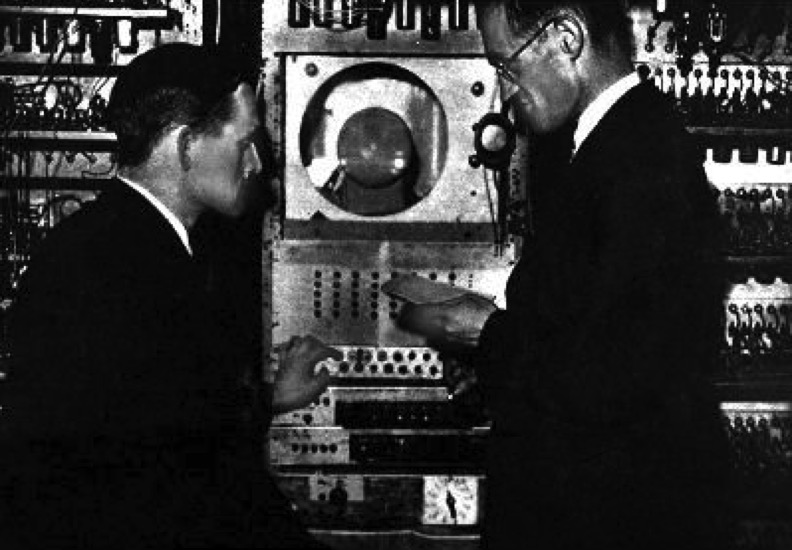History (1946): Williams Demos Cathode Ray Tube Storage
CRT electrostatic effect enables random access memory.
This is a Press Release edited by StorageNewsletter.com on February 20, 2018 at 2:27 pmThis article comes from the Computer History Museum.
1946: Williams demonstrates CRT storage
Cathode Ray Tube electrostatic effect enables random access memory
Freddie Williams and Tom Kilburn in Manchester (1948)
(Courtesy University of Manchester)

Aware of work in the U.S. on electrostatic memory effects on the screen of a cathode ray tube (CRT), Fredrick C. Williams (1911-1977) demonstrated the storage of a single binary digit (bit) at the British Telecommunications Research Establishment in October 1946.
Storage occurs where a dot drawn on a cathode ray tube (CRT) screen induces a positive charge surrounded by a negatively charged area. A positive voltage pulse induced in a metal plate placed at the face of the tube enables reading of the stored information. The electron beam can be directed to any location on the screen thus offering random access to the data but as charge gradually leaks away from the site it must be rewritten on a regular cycle.
Williams moved to Manchester University where working with Tom Kilburn in late 1947 they were able to store 2,048 bits. In 1948 the Manchester ‘Baby’ machine ran the first program on an electronic stored-program computer using Williams-Kilburn Tube storage.
Application in early U.S. machines included the Princeton IAS, IBM 701, IBM 702, Standards Western Automatic Computer (SWAC), and Univac 1103, as well as the Soviet Strela-1 and the Japanese TAC (Tokyo Automatic Computer).
British-born engineer Jan A. Rajchman designed the Solectron special-purpose vacuum tube for RCA in 1946. The device worked on the same principle as the Williams-Kilburn Tube but was intended to improve on its predictability of operation. Designed to hold 4,096 bits, it proved difficult to build and was replaced by a smaller 256-bit version that was used on the Rand Corporation Johnniac before being replaced by magnetic core memory.
Similar technologies of electron beam addressable memories (BEAM OS) were pursued by GE in the mid-1970’s for military applications that were not compatible with mechanically moving storage.













 Subscribe to our free daily newsletter
Subscribe to our free daily newsletter

